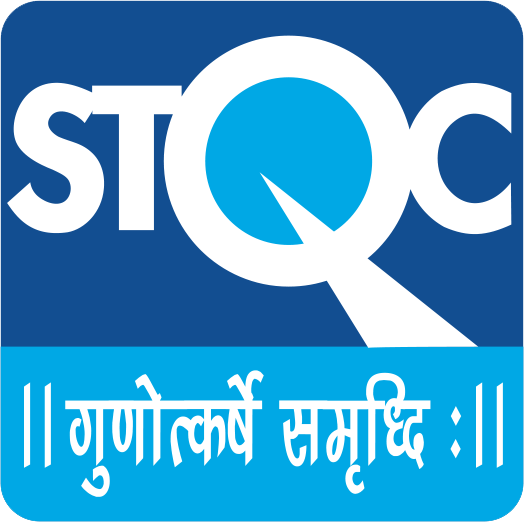Digital Brand Identity Manual Compliance Certification
Introduction
India is setting an example for the world with its digital growth story by demonstrating a rapid increase in digital infrastructure and adoption. The Government of India’s active work on expanding its digital presence aims to enhance governance, service delivery, and communication with citizens. With the Government of India’s digital platforms emerging as the first point of contactand a preferred medium for citizens, a cohesive and compelling brand presence is essential to engage with the national and global audiences effectively.The Digital Brand Identity Manual (DBIM) emerges as a comprehensive guide tailored to meet the unique needs of the Government of India in establishing a harmonious visual identity across its digital platforms. The aim is to ensure that the digital harmonization will invoke higher trust and create better recall value for the citizens and facilitate simplified citizen interactions by enabling easy discovery of content and services. This manual serves as a blueprint for aligning the different digital platforms of the Indian government, consisting of websites, web apps, mobile apps, and social media, under a unified brand language. It must be implemented in conjunction with the latest version of GIGW, including but not limited to the aspects of quality, accessibility, security, and lifecycle management.
Overview
The STQC Digital Brand Identity Manual Certification is a specialized certification program aimed at ensuring organizations develop and maintain a consistent, accessible, and high-quality digital brand identity. This certification validates that your digital brand guidelines conform to the highest standards of quality, usability, and accessibility, thereby enhancing trust and recognition across digital platforms.
Objectives
The primary objective of the DBIM is to define the key elements that will contribute to a unified and consistent visual identity for the Government of India in its digital platforms. The DBIM aims to achieve two overarching goals:
- To Guide: The DBIM acts as a comprehensive style guide and outlines the visual, textual, and experiential elements necessary to bring harmonization to the digital platforms of the Government of India. This includes colour palette, typography, iconography, and more.
- To Preserve: It aims to maintain the integrity of the government's digital brand to portray a cohesive and compelling brand presence to both national and global audiences.
Why to Choose STQC?
- STQC is an independent testing and certification organization which is attached office of the Ministry of Electronics and Information Technology, Government of India.
- STQC has vast experience in operating third party certification schemes with international recognitions. STQC offer services in a very cost effective, competent and credible manner with customer care as the focus.
Certification Process
Certification may be applied through two methods:
- STQC Labs (Central Government Labs)
- STQC's empaneled Labs (SETL) which have scope of GIGW evaluation
For certification through STQC Labs, the following process needs to be followed:
- Step 1: The customer applies to respective STQC IT centre with the consent of STQC Certification Body for certification.
- Step 2: The assessment team evaluates the website using test tools and manually and is carried out for compliance with scheme requirements.
- Step 3: After the satisfactory assessment results, STQC issues the Certificate of compliance. The certificate shall remain valid for three years with annual surveillance & surprise surveillance audit.
For certification through SETLs Labs, the following process needs to be followed:
- Step 1: The customer applies to selected SETL through their own approved procurement procedures.
- Step 2: SETL seek the consent of STQC Certification Body for certification by submitting duly filled in application form along with appointment of validator. Validator will be appointed by STQC Certification body for each website submitted by SETLs. The SETL will perform the testing/evaluation through its assessor.
- Step 3: The assessment team evaluates the website using test tools and manually.
- Step 4: After the satisfactory assessment results with recommendations of Validator, STQC issues the Certificate of Registration and Certification Mark. The certificate shall remain valid for three years with annual surveillance & surprise surveillance audit.
Important Note: STQC Labs and SETLs can only perform evaluation and shall not issue certificates. STQC Directorate, Electronics Niketan only can issue Compliance Certificates.
Downloads
New Application Form 292.57 KB ![]()
Certification Agreement 359.44 KB ![]()
DBIM Manual V 3.0 10.42 MB ![]()
Rules & Procedures 1.23 MB ![]()
Charges / Fee for evaluation if performed by STQC Labs :
Charges shall be sought from STQC IT Laboratory assigned for the testing and all charges of Rs. 3.5 Lakhs needs to be deposited, in advance through Bharatkosh Portal (bharatkosh.gov.in) to STQC IT Lab/centre (for evaluation if performed by STQC Labs), assigned to carry the website testing job.
Contact Us
| Name and Designation | Address | Phone/Email/Fax |
|---|---|---|
| Suresh Chandra, Scientist G | STQC Directorate Ministry of Electronics and Information Technology Electronics Niketan, III Floor, 6, CGO Complex, Lodi Road, New Delhi - 110 003 | Phone: 011 - 24301382 Email: suresh AT stqc.gov.in Fax: 011-24363083 |












